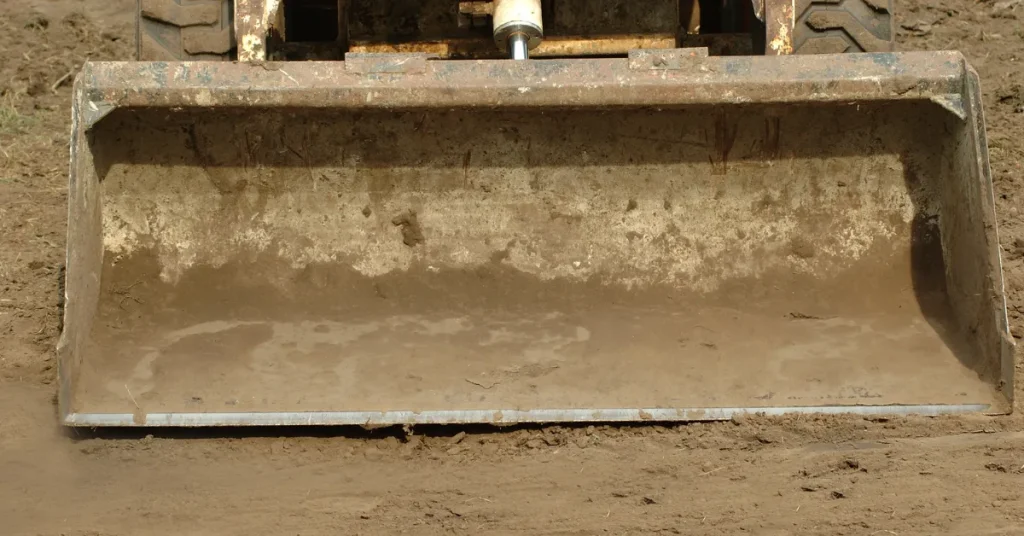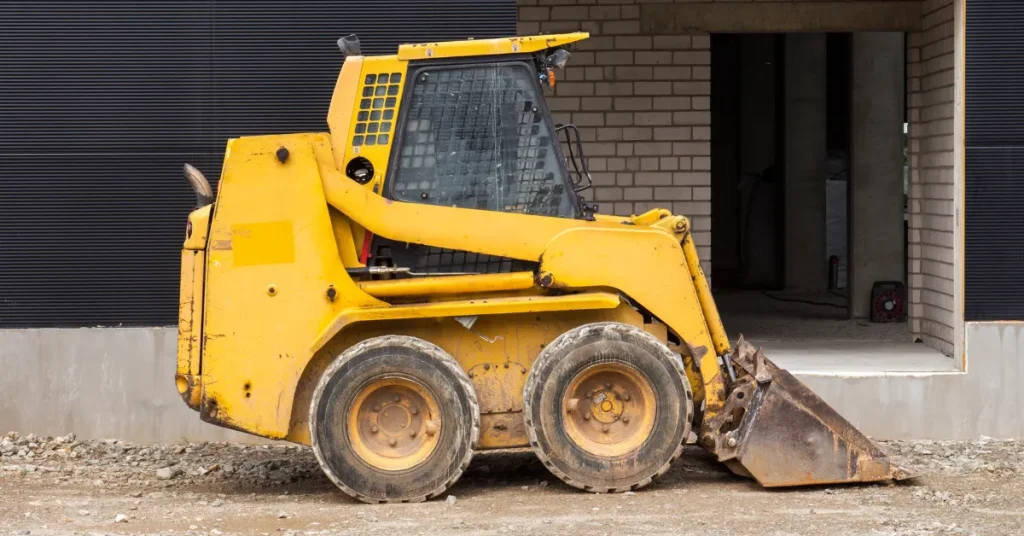A standard Bobcat bucket is typically 68 inches wide. Specific models may vary in width.
Bobcat skid steer loaders are essential tools for construction, landscaping, and farming operations. The width of a Bobcat bucket directly impacts its capability to maneuver in tight spaces and its overall material handling capacity.
Choosing the right bucket size for a Bobcat is crucial for optimizing workflow efficiency and meeting the demands of different tasks.
Contractors and operators often select from a range of bucket sizes, including the common 68-inch option, to tailor their equipment for various job site requirements.
Understanding the dimensions of Bobcat attachments, such as buckets, helps in planning projects and ensures that the equipment can perform the necessary functions with precision and ease.

Digging Into Bobcat Buckets
Understanding the width of a Bobcat bucket is crucial for efficient earthmoving. Bobcat buckets come in various sizes. Each bucket serves a specific purpose.
The Role In Earthmoving
Bobcat buckets are essential in earthmoving operations. They handle materials ranging from dirt to rocks. The width of the bucket affects how much material it can move. Wider buckets clear large areas faster. Narrow buckets allow for more precision.
- Small projects may need a narrower bucket.
- Large-scale operations benefit from wider buckets.
Diversity In Bucket Types
Several types of Bobcat buckets cater to different jobs:
| Type of Bucket | Common Widths |
| General Purpose Bucket | 36″, 48″, 60″, 68″, 74″, 80″, 84″ |
| Heavy Duty Buckets | 60″, 68″, 74″, 80″, 84″ |
| Combination Buckets | 74″, 80″, 84″ |
| Grading Buckets | 60″, 66″, 72″, 78″, 84″ |
Each type comes with different widths to match specific tasks. Jobs like grading might require a 60″ grading bucket. Tasks like trenching might use a narrower option.
- Select a bucket that fits the machine and project needs.
- Check the job’s requirements before choosing a bucket width.
Standard Sizes

The right size of a Bobcat bucket can influence your projects immensely. Bobcat buckets come in various sizes. Understanding these sizes is key for efficiency and effectiveness. Below, we’ll dig into the standard dimensions that fit your compact loaders perfectly.
Typical Dimensions For Compact Loaders
Common Bobcat buckets have specific dimensions. These dimensions make the job done right. Let’s explore:
- Width: Typically ranges from 36 to 84 inches.
- Depth: Usually about 28 inches.
- Height: Often around 19 to 22 inches.
- Capacity: Can vary from 9 to 20 cubic feet.
Comparing Sizes Across Models
Bobcat models accommodate different bucket sizes. It’s best to compare them to fit your loader’s power and job need.
| Model | Bucket Width (inches) | Capacity (cubic feet) |
| S450 | 36 – 68 | 9.4 – 18.7 |
| S650 | 54 – 84 | 10.2 – 20.0 |
| T650 | 68 – 80 | 18.7 |
Smaller models fit smaller buckets. Larger models can handle larger ones. Always match your bucket to your model for the best performance.
Maximizing Efficiency
When tackling a project, choosing the correct Bobcat bucket size is crucial for efficiency. A bucket’s width can impact your productivity and the machine’s operating cost. Making the right choice saves time and money.
Bucket Capacity And Job Suitability
- Selecting the right bucket capacity is key for optimal performance.
- Bobcat buckets come in various sizes.
- You must match the bucket to the job.
| Bucket Type | Width | Capacity |
| General Purpose | 68 inches | 0.52 cubic yards |
| Heavy Duty | 74 inches | 0.66 cubic yards |
| Combination | 80 inches | 0.69 cubic yards |
- The correct size depends on the material and the space.
- A larger bucket moves more material.
- A smaller one is better for tight spaces.
Operational Considerations For Size
A bucket’s size affects machine balance and maneuverability.
It’s essential for safety and function.
- Machine size: Match the bucket to Bobcat’s capacity.
- Job type: Consider material density and type.
- Space constraints: Use smaller buckets for confined areas.
Always check the Bobcat’s load rating.
Avoid oversized buckets.
It might overburden the loader.
Attachment Variations
When it comes to enhancing the versatility of your Bobcat, attachments play a crucial role. Bobcat buckets are diverse attachments that cater to different tasks.
Let’s delve into the specialized bucket types and their respective widths, and comprehend the interchangeability factor of these attachments.
Specialized Buckets And Their Widths
Bobcat buckets come in several shapes and sizes, tailored for specific jobs. Here’s a list of common types:
- General Purpose Buckets: Typically range between 36 to 84 inches wide.
- Heavy Duty Buckets: Designed for tougher tasks, ranging from 60 to 84 inches.
- Combination Buckets: Combination tasks enable, with widths from 68 to 80 inches.
- Grading Buckets: Precise for smooth surfaces, with widths up to 96 inches.
Interchangeability Across Machines
Bobcat buckets are designed to be interchangeable across various Bobcat models. This feature enhances the versatility and value of your equipment. Key points to consider:
- Attachment mounting system enables quick swap of buckets.
- Widths must align with the lifting capacity of the machine.
- Hydraulic flow requirements should be cross-checked for optimal performance.
An understanding of the Bobcat’s hydraulic system and lift capabilities ensures the right bucket choice for the task at hand.
Measuring Matters
Measuring Matters is crucial when sizing up a bobcat bucket. Correct measurements ensure the right fit for specific jobs. A bucket that is too large or too small can affect your machine’s performance.
How To Accurately Measure A Bucket
To start, place your bucket on a flat surface. Ensure it’s free from wear or damage. This guarantees accurate results. You’ll need a tape measure, pen, and notepad.
- Width: Measure from one edge to the other at the widest point.
- Depth: Measure from the front cutting edge to the back of the bucket.
- Height: Measure from the base to the highest point of the bucket.
Record these numbers. They determine the bucket’s capacity and compatibility with your bobcat.
Common Measurement Mistakes
- Ignoring bucket shape, which skews width readings.
- Missing bucket curve measurements can lead to wrong depth readings.
- Assuming one size fits all machine models is a common error.
- Miscalculating missing or worn cutting edges affects bucket capacity.
Beyond Width: Additional Factors

Exploring the dimensions of a Bobcat bucket goes beyond just measuring width. While width is a critical measure, there are other significant factors.
Bucket Material And Weight
The material used to make a Bobcat bucket affects many features. It even influences how much the bucket can carry.
Manufacturers often use steel for its strength and durability. But not all steel is the same. We have different types of steel. Some are lighter and others are stronger.
- High-strength steel: Increases durability without adding weight.
- Standard steel: Heavier, impacting the load.
A bucket’s weight is crucial. Heavy buckets reduce the total weight a Bobcat can manage. Lighter ones allow for more materials to be carried. This balance is vital for operators to understand their loader’s capabilities.
Maintenance And Its Impact On Dimensions
Regular maintenance keeps a Bobcat bucket in shape. But what happens without proper care? The dimensions can change. Wear and tear might cause the bucket to lose its shape. The sides may bulge. The cutting edge can wear down.
This wear can affect the bucket’s performance. It can also change how much material fits inside. Regular maintenance includes:
- Checking the cutting edge for wear.
- Inspecting for any deformations.
- Ensuring all bolts are tightened.
Ignoring maintenance can lead to inefficiencies. Operators should routinely check their buckets. This helps to maintain the original dimensions and performance.
FAQs About How Wide Is A Bobcat Bucket
How Wide Is A Bobcat Scoop?
A standard Bobcat loader bucket is typically 68 inches wide. Specific models may vary, offering scoops ranging from 36 to 80 inches.
How Wide Is A Cat Skid Steer Bucket?
A Cat skid steer bucket typically ranges from 60 to 80 inches in width, depending on the model and application.
How Big Is A 1 Yard Bobcat Bucket?
A 1-yard Bobcat bucket typically has a width of about 74 inches. It can hold approximately 1 cubic yard of material, which equates to about 27 cubic feet.
What Are The Dimensions Of A Bobcat Loader?
Bobcat loader dimensions vary by model. The S70, as an example, is 71. 4 inches high, 35. 4 inches wide, and 75. 8 inches long. Always check specific model specs for accuracy.
Conclusion
Wrapping up, bobcat buckets vary in size to match specific tasks and machinery. Whether for construction, landscaping, or farming, there’s an option that fits.
Remember to consider capacity and compatibility before making your selection. Ensuring the right fit enhances efficiency and safety on any project.
Resources:
1. https://www.boomandbucket.com/resources/specs/loaders/bobcat/763
